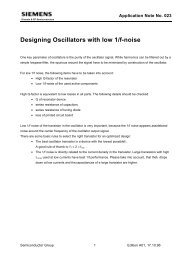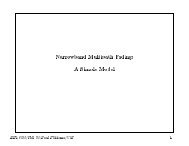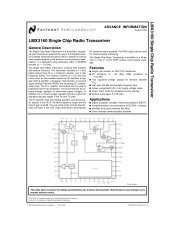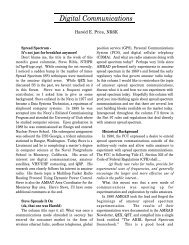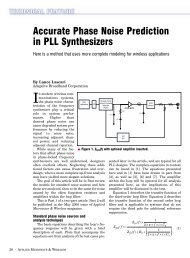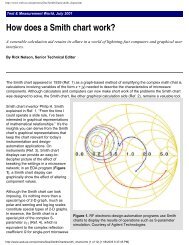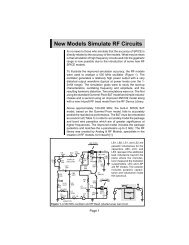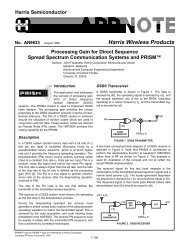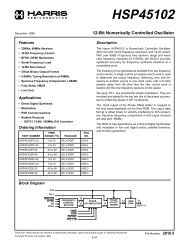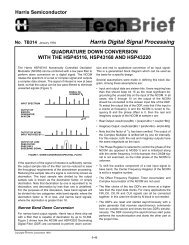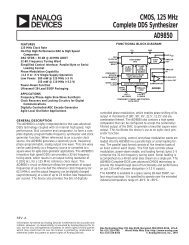SECTION 1 SINGLE-SUPPLY AMPLIFIERS - Analog Devices
SECTION 1 SINGLE-SUPPLY AMPLIFIERS - Analog Devices
SECTION 1 SINGLE-SUPPLY AMPLIFIERS - Analog Devices
- No tags were found...
Create successful ePaper yourself
Turn your PDF publications into a flip-book with our unique Google optimized e-Paper software.
PERFORMANCE SUMMARY OF AD822 IN-AMPFigure 1.10THE THREE OP AMP INSTRUMENTATION AMPLIFIERTOPOLOGYFor the highest precision and performance, the three op amp instrumentationamplifier topology is optimum for bridge and other offset transducer applicationswhere high accuracy and low nonlinearity are required. This is at the expense ofadditional power consumption over the two op amp instrumentation circuit (3amplifiers versus 2 amplifiers). Furthermore, like the two op amp configuration, theinput amplifiers can use one dual op amp for tight matching of input offset voltagematching, input bias current, and open-loop gain. Or, a single quad operationalamplifier can be used for the whole circuit, including a reference voltage buffer, ifrequired.Single-supply/rail-to-rail amplifiers can be used in this topology, like that shown fortwo op amp designs, if the output characteristics of the single-supply/rail-to-railamplifiers are understood. As shown in Figure 1.11, a generalized, comprehensiveanalysis of the structure will illustrate the behavior of the nodal voltages andamplifier output currents as functions of the applied common-mode input voltage(V CM ), the applied differential (signal) voltage (V IN ), and the output referencevoltage (V REF ). As shown in Eq. 1.16 through 1.27, the nodal analysis was carriedout for positive-input differential voltages; because of the symmetry in the circuit,the expressions for the nodal voltages and amplifier output currents carried out fornegative-input differential voltages are identical.17



